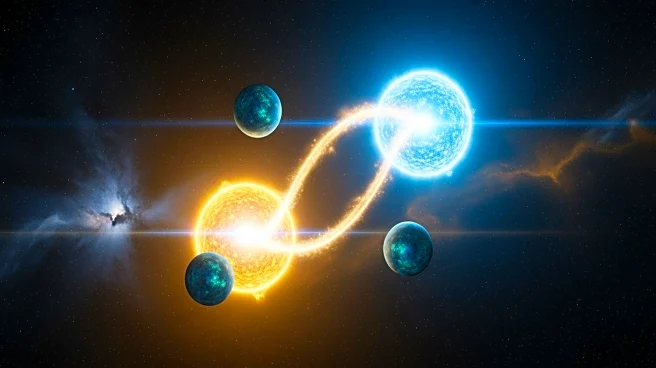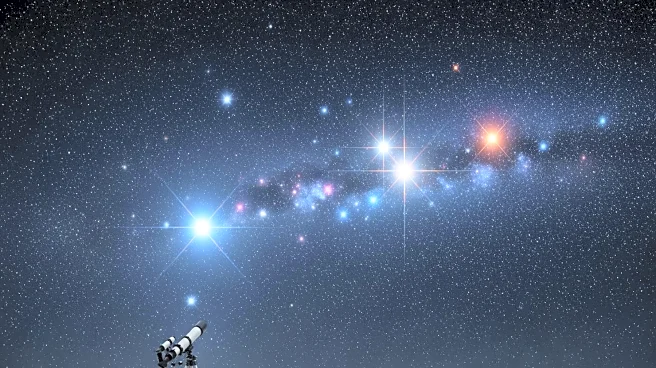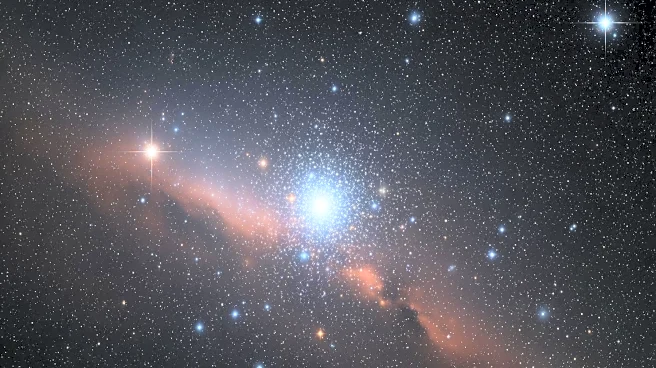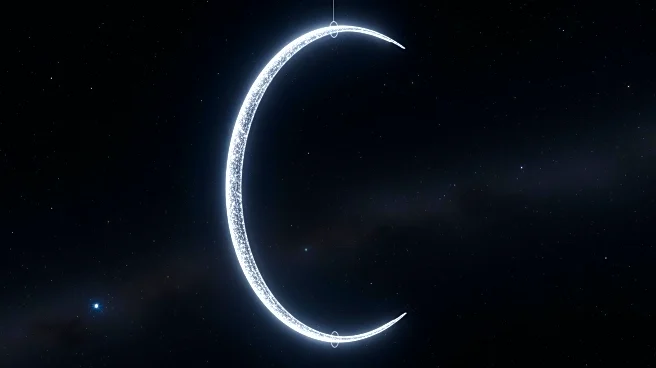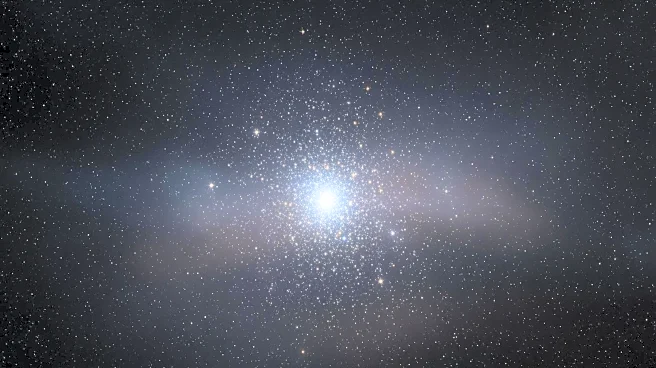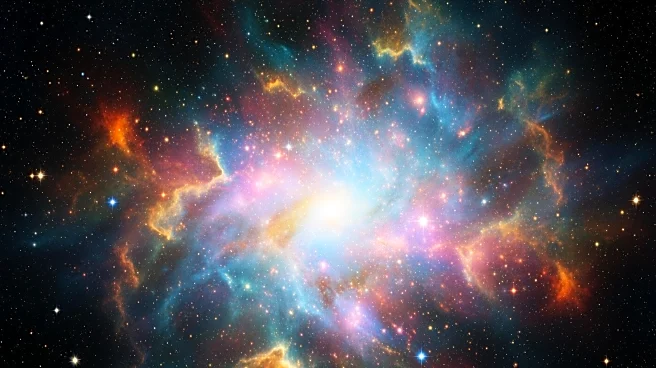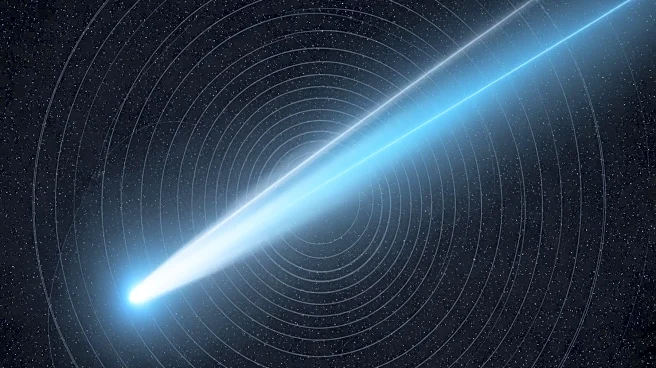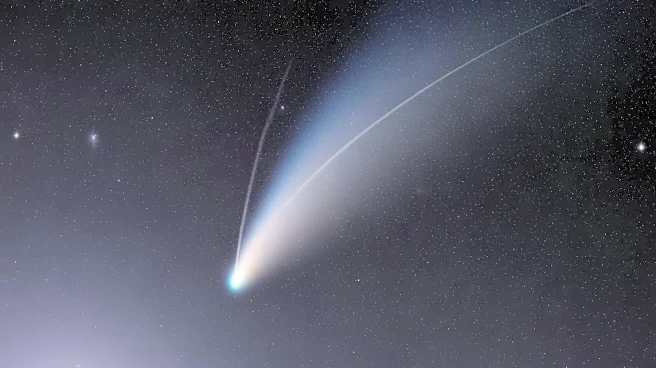What's Happening?
In a groundbreaking observation, astronomers using the European Southern Observatory's Very Large Telescope have captured a massive star's explosion at the exact moment it burst through its surface. This
marks the first time in cosmic history that such an event has been observed in such detail. The team used spectropolarimetry to reveal the explosion's olive-like shape, providing new insights into the physics behind supernovae and reshaping our understanding of how massive stars die. The supernova, named SN 2024ggi, was detected in the galaxy NGC 3621, located about 22 million light-years away.
Why It's Important?
This observation provides a rare glimpse into the final moments of a massive star's life, offering valuable information about the processes that lead to supernovae. Understanding the geometry and dynamics of these explosions is crucial for astrophysics, as it informs theories about stellar evolution and the life cycle of stars. The findings challenge existing models of supernovae and offer new insights into the mechanisms driving these cosmic events. This research enhances our understanding of the universe's structure and the dynamic processes that shape it, contributing to broader astrophysical knowledge.
What's Next?
Further observations using advanced telescopes and techniques will continue to explore the dynamics of supernovae and the life cycles of massive stars. These studies aim to refine models of stellar evolution and improve predictions about the behavior of stars in their final stages. The data collected will be used to enhance our understanding of the universe's structure and the processes that govern it. As technology advances, astronomers hope to uncover more about the origins and evolution of stars, providing deeper insights into the cosmos.


